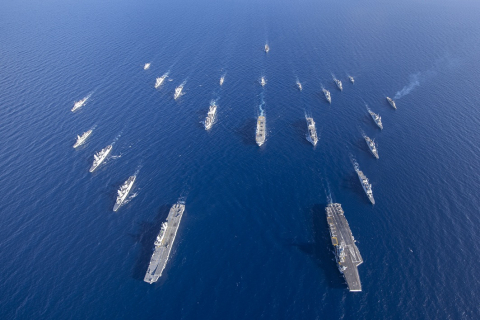North Korea gets a hang of building A-bombs
For now we don’t have enough information to know how much of a change this third test represents, I mean we know that the power of the nuclear device that was used is greater than in the previous tests. The first one in 2006 was generally considered to be a failure. And the second one was a bit greater while the third one which happened yesterday was the greatest in terms of yield. So, this is the main indicator that North Korea has made progress in its mastery of the design of nuclear weapons.
However, there is still a lot of details that have to surface in order to understand whether or not this is a huge change. For example, we have no idea about the kind of fissile material that was used to detonate this weapon. And this is an important element since until now they were relying on plutonium to design their weapons. Whether or not they still do so, or if they rely on highly enriched uranium would be a huge change meaning that they are supposed to have much greater stocks of uranium and much smaller stocks of plutonium. So, this is an important issue that we have to take a closer look at in the next weeks and try to figure out whether or not this test represents a critical change in the North Korean military capability.
But where are they getting their technology from?
When we talk of the nuclear weapon itself we know that they apparently have received some information from Pakistan in the past, not recently but in the past. As you may be aware of the father of the Pakistani nuclear bomb Abdul Qadeer Khan was the head of a network which proliferated nuclear technology, the design of a nuclear weapon and particularly centrifuges that are used to enrich uranium. Those technologies were proliferated to Iran, to North Korea and we know that North Korea has been developing its uranium enrichment program for at least ten years. It was revealed two or three years ago but there were clear indicators that they were trying to do so as soon as 2003 or 2002.
So, in this area the help came mostly from Pakistan, but not officially from the state itself, but from a clandestine supplier which included one of the responsible inside Pakistan for the Pakistani nuclear program. But of course the Pakistani Government always denied that they were involved directly.
It is very interesting that Iran this time reacted by saying that all nuclear devices should be destroyed in the Korean Peninsula. And to me it looks a little bit like an untypical reaction, unusual reaction on the part of Tehran. How could we read it?
Well, I think we have to see this as a political posturing from Tehran. As you know they’ve always denied that they have the ambition to develop nuclear weapons. It’s always been stated like that. So, it is not a surprise to me that they would say publically that nuclear weapons are a bad thing and they repeatedly argued in favour of global nuclear disarmament because openly and publicly they are not trying to pursue this option. Of course we know that they are not transparent about their nuclear ambitions and we lack some information, and they have not been willing to give this information to the IAEA. But the fact that Tehran itself makes that kind of statement shouldn’t be a surprise. It is also ironic because there’s been rumors and even some kind of information about Iranian scientists being seen in North Korea, particularly scientists involved in the Iranian ballistic missile program.
And it is also interesting that this test, like the previous ones, was preceded by some kind of missile launch. The Koreans are saying that it is a space rocket but some are saying that this could be a ballistic missile. So, does that mean that this time when the test was successful, does that mean that North Koreans also have transportation means for a nuclear device?
The December missile test, as you know, was officially a rocket test, it was a satellite launch, but the technologies that are required to put a satellite onto orbit and to launch a long range ballistic missile are similar. So, once you master such a technology as staging, the separation of the different stages of the missile, you are able to build a long range ballistic missile. The December test proved that they have made progress in this area.
However, there are still some unknowns here too because we know that they’ve been able to put a satellite in space but we don’t know whether or not they’ve been able to build the reentry vehicle inside which the bomb should be put and which has to be very resistant to the extreme heat that is caused by reentering into the atmosphere when the weapon falls back towards earth and towards its target. And this is an extremely difficult feature and for now we don’t know whether or not North Korea has been able to do that.
And the second unknown is whether or not they’ve been able to design a weapon that is small enough to be put on such a ballistic missile. We are not able to confirm that, we have no information again about the design of the device that was used during the previous test. If they are not able to weaponize this device or to create a miniaturized weapon that is small enough to put on the ballistic missile, then their deterrent is less strong than they declare.

Partager











